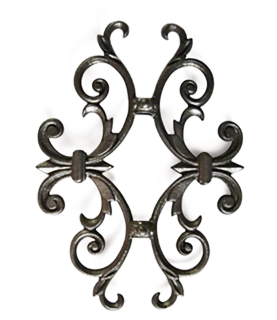Cast Iron Collars and Bushings for Enhanced Durability and Performance in Industrial Applications
The Importance of Cast Iron Collars and Bushes in Industrial Applications
Cast iron collars and bushes are critical components in numerous industrial applications, providing both structural integrity and mechanical support in various machinery. Their unique properties, including durability, resistance to wear, and high load-bearing capacity, make them essential in different sectors, such as construction, automotive, and manufacturing.
Understanding Cast Iron
Cast iron is an iron alloy that primarily consists of iron, carbon, and silicon. Its distinct attributes arise from the high carbon content, which enhances its fluidity during casting. This alloy can be molded into complex shapes, making it perfect for producing intricate components like collars and bushes. Cast iron’s exceptional hardness, corrosion resistance, and ability to withstand shock loads make it a favorite material in mechanical engineering.
The Role of Collars
Collars serve as essential components that maintain the alignment and positioning of moving parts in machinery. They are typically placed on shafts or axles to prevent axial movement and ensure stability during operation. Cast iron collars, in particular, are favored due to their robust nature. They support heavy loads while maintaining precision, which is crucial in applications such as conveyor systems, gear assemblies, and motor mounts.
One notable advantage of using cast iron collars is their excellent damping properties. They absorb vibrations and reduce noise during operation, which extends the lifespan of machinery and creates a safer working environment. This is especially important in industries where machinery operates continuously, as it minimizes wear and tear on components.
The Function of Bushes
Bushes, also known as bushings or sleeves, play a complementary role to collars by serving as linings for holes or shafts. They reduce friction between moving parts and help distribute load evenly across surfaces. In applications such as automotive engines or industrial machinery, cast iron bushes provide a low-friction interface that minimizes wear on both the bush and the surface it contacts.
cast iron collars and bushes

Like collars, cast iron bushes are designed to withstand significant stress and strain. They can operate efficiently under high temperatures and pressures, making them invaluable in applications like heavy machinery and hydraulic systems. Their wear resistance ensures that they maintain their dimensions and functionality over extended periods, reducing the need for frequent replacements.
Advantages of Using Cast Iron Collars and Bushes
1. Durability Cast iron has a long lifespan, making it a cost-effective choice for industrial applications. The ability to withstand harsh operating conditions without significant degradation ensures that machinery remains functional and reliable.
2. Low Maintenance Components made from cast iron require less maintenance compared to those made from other materials, translating to lower operational costs. This is particularly advantageous in sectors where downtime is costly.
3. Versatility Cast iron collars and bushes can be molded into various shapes and sizes, making them adaptable for a wide range of applications, from small-scale machinery to large industrial equipment.
4. Thermal Stability The thermal properties of cast iron make it suitable for high-temperature applications. It can absorb and distribute heat effectively, preventing components from overheating.
Conclusion
In summary, cast iron collars and bushes are indispensable in the realm of mechanical engineering. Their roles in machinery stability, load distribution, and wear resistance significantly contribute to the efficiency and longevity of industrial applications. As industries continue to evolve and machinery becomes increasingly sophisticated, the importance of selecting the right components—like cast iron collars and bushes—cannot be overstated. Emphasizing quality and durability in these parts not only enhances the overall performance of machinery but also ensures safety and reliability in various industrial processes.
-
Wrought Iron Components: Timeless Elegance and Structural StrengthNewsJul.28,2025
-
Window Hardware Essentials: Rollers, Handles, and Locking SolutionsNewsJul.28,2025
-
Small Agricultural Processing Machines: Corn Threshers, Cassava Chippers, Grain Peelers & Chaff CuttersNewsJul.28,2025
-
Sliding Rollers: Smooth, Silent, and Built to LastNewsJul.28,2025
-
Cast Iron Stoves: Timeless Heating with Modern EfficiencyNewsJul.28,2025
-
Cast Iron Pipe and Fitting: Durable, Fire-Resistant Solutions for Plumbing and DrainageNewsJul.28,2025
-
 Wrought Iron Components: Timeless Elegance and Structural StrengthJul-28-2025Wrought Iron Components: Timeless Elegance and Structural Strength
Wrought Iron Components: Timeless Elegance and Structural StrengthJul-28-2025Wrought Iron Components: Timeless Elegance and Structural Strength -
 Window Hardware Essentials: Rollers, Handles, and Locking SolutionsJul-28-2025Window Hardware Essentials: Rollers, Handles, and Locking Solutions
Window Hardware Essentials: Rollers, Handles, and Locking SolutionsJul-28-2025Window Hardware Essentials: Rollers, Handles, and Locking Solutions -
 Small Agricultural Processing Machines: Corn Threshers, Cassava Chippers, Grain Peelers & Chaff CuttersJul-28-2025Small Agricultural Processing Machines: Corn Threshers, Cassava Chippers, Grain Peelers & Chaff Cutters
Small Agricultural Processing Machines: Corn Threshers, Cassava Chippers, Grain Peelers & Chaff CuttersJul-28-2025Small Agricultural Processing Machines: Corn Threshers, Cassava Chippers, Grain Peelers & Chaff Cutters












